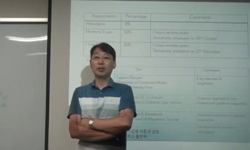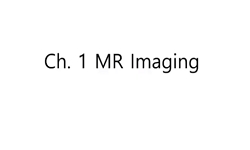Objective: The purpose of this study is to find the clinical and radiographic characteristics of traumatic craniocervical junction (CCJ) injuries requiring occipitocervical fusion (OC fusion) for early diagnosis and surgical intervention. Methods: We ...
http://chineseinput.net/에서 pinyin(병음)방식으로 중국어를 변환할 수 있습니다.
변환된 중국어를 복사하여 사용하시면 됩니다.
- 中文 을 입력하시려면 zhongwen을 입력하시고 space를누르시면됩니다.
- 北京 을 입력하시려면 beijing을 입력하시고 space를 누르시면 됩니다.



Clinical and Radiological Clues of Traumatic Craniocervical Junction Injuries Requiring Occipitocervical Fusion to Early Diagnosis
한글로보기https://www.riss.kr/link?id=A107966093
-
저자
Daimon Shiraishi (Department of Neurosurgery, Nagoya University Hospital) ; Yusuke Nishimura (Department of Neurosurgery, Nagoya University Hospital) ; Isaac Aguirre-Carreno (Division of Neurosurgery, St. Michael’s Hospital, University of Toronto) ; Masahito Hara (Department of Neurosurgery, Aichi Medical University Hospital) ; Satoshi Yoshikawa (Department of Neurosurgery, Nagoya University Hospital) ; Kaoru Eguchi (Department of Neurosurgery, Nagoya University Hospital) ; Yoshitaka Nagashima (독립연구자) ; Hiroshi Ito (Department of Neurosurgery, Nagoya University Hospital) ; Shoichi Haimoto (Department of Neurosurgery, Nagoya University Hospital) ; Yu Yamamoto (Department of Neurosurgery, Inazawa Manucipal Hospital) ; Howard J. Ginsberg (Department of Neurosurgery, Inazawa Manucipal Hospital) ; Masakazu Takayasu (Department of Neurosurgery, Aichi Medical University Hospital) ; Ryuta Saito (Department of Neurosurgery, Nagoya University Hospital)
- 발행기관
- 학술지명
- 권호사항
-
발행연도
2021
-
작성언어
English
- 주제어
-
등재정보
KCI등재,SCIE,SCOPUS
-
자료형태
학술저널
-
수록면
741-748(8쪽)
-
KCI 피인용횟수
0
- DOI식별코드
- 제공처
-
0
상세조회 -
0
다운로드
부가정보
다국어 초록 (Multilingual Abstract)
Objective: The purpose of this study is to find the clinical and radiographic characteristics of traumatic craniocervical junction (CCJ) injuries requiring occipitocervical fusion (OC fusion) for early diagnosis and surgical intervention.
Methods: We retrospectively reviewed 12 patients with CCJ injuries presenting to St. Michaels Hospital in Toronto who underwent OC fusion and looked into the following variables; (1) initial trauma data on emergency room arrival, (2) associated injuries, (3) imaging characteristics of computed tomography (CT) scan and magnetic resonance imaging (MRI), (4) surgical procedures, surgical complications, and neurological outcome.
Results: All patients were treated as acute spinal injuries and underwent OC fusion on an emergency basis. Patients consisted of 10 males and 2 females with an average age of 47 years (range, 18–82 years). All patients sustained high-energy injuries. Three patients out of 6 patients with normal BAI (basion-axial interval) and BDI (basion-dens interval) values showed visible CCJ injuries on CT scans. However, the remaining 3 patients had no clear evidence of occipitoatlantal instability on CT scans. MRI clearly described several findings indicating occipitoatlantal instability. The 8 patients with normal values of ADI (atlanto-dens interval interval) demonstrated atlantoaxial instability on CT scan, however, all MRI more clearly and reliably demonstrated C1/2 facet injury and/or cruciate ligament injury.
Conclusion: We advocate measures to help recognize CCJ injury at an early stage in the present study. Occipitoatlantal instability needs to be carefully investigated on MRI in addition to CT scan with special attention to facet joint and ligament integrity.
참고문헌 (Reference)
1 Debernardi A, "Traumatic injuries to the craniovertebral junction : a review of rare events" 37 : 203-216, 2014
2 Tobert DG, "Traumatic atlantooccipital dissociation and atlantoaxial instability : concomitant ligamentous injuries without neurologic deficit : a case report" 8 : e62-, 2018
3 Guigui P, "Traumatic atlantooccipital dislocation with survival : case report and review of the literature" 4 : 242-247, 1995
4 Mendenhall SK, "Traumatic atlantooccipital dislocation : comprehensive assessment of mortality, neurologic improvement, and patient-reported outcomes at a Level 1 trauma center over 15 years" 15 : 2385-2395, 2015
5 DiBenedetto T, "Traumatic atlanto-occipital instability. A case report with follow-up and a new diagnostic technique" 15 : 595-597, 1990
6 Collalto PM, "Traumatic atlanto-occipital dislocation. Case report" 65 : 863-870, 1986
7 Siddiqui J, "The spectrum of traumatic injuries at the craniocervical junction : a review of imaging findings and management" 24 : 377-385, 2017
8 Bucholz RW, "The pathological anatomy of fatal atlanto-occipital dislocations" 61 : 248-250, 1979
9 Davis JW, "The etiology of missed cervical spine injuries" 34 : 342-346, 1993
10 Theodore N, "The diagnosis and management of traumatic atlanto-occipital dislocation injuries" 72 (72): 114-126, 2013
1 Debernardi A, "Traumatic injuries to the craniovertebral junction : a review of rare events" 37 : 203-216, 2014
2 Tobert DG, "Traumatic atlantooccipital dissociation and atlantoaxial instability : concomitant ligamentous injuries without neurologic deficit : a case report" 8 : e62-, 2018
3 Guigui P, "Traumatic atlantooccipital dislocation with survival : case report and review of the literature" 4 : 242-247, 1995
4 Mendenhall SK, "Traumatic atlantooccipital dislocation : comprehensive assessment of mortality, neurologic improvement, and patient-reported outcomes at a Level 1 trauma center over 15 years" 15 : 2385-2395, 2015
5 DiBenedetto T, "Traumatic atlanto-occipital instability. A case report with follow-up and a new diagnostic technique" 15 : 595-597, 1990
6 Collalto PM, "Traumatic atlanto-occipital dislocation. Case report" 65 : 863-870, 1986
7 Siddiqui J, "The spectrum of traumatic injuries at the craniocervical junction : a review of imaging findings and management" 24 : 377-385, 2017
8 Bucholz RW, "The pathological anatomy of fatal atlanto-occipital dislocations" 61 : 248-250, 1979
9 Davis JW, "The etiology of missed cervical spine injuries" 34 : 342-346, 1993
10 Theodore N, "The diagnosis and management of traumatic atlanto-occipital dislocation injuries" 72 (72): 114-126, 2013
11 Debernardi A, "The craniovertebral junction area and the role of the ligaments and membranes" 76 (76): S22-S32, 2015
12 Ali J, "The Advanced Trauma Life Support course for senior medical students" 35 : 541-545, 1992
13 Horn EM, "Survivors of occipitoatlantal dislocation injuries : imaging and clinical correlates" 6 : 113-120, 2007
14 Fisher CG, "Recognition and management of atlanto-occipital dislocation : improving survival from an often fatal condition" 44 : 412-420, 2001
15 Garrido BJ, "Occipitocervical fusion using contoured rods and medial offset connectors:description of a new technique" 32 (32): 2009
16 Kasliwal MK, "Occipitocervical dissociation-incidence, evaluation, and treatment" 9 : 247-254, 2016
17 Lu DC, "Nuances of occipitocervical fixation" 66 (66): 141-146, 2010
18 Ryken TC, "Management of isolated fractures of the atlas in adults" 72 (72): 127-131, 2013
19 Roy AK, "Magnetic resonance imaging of traumatic injury to the craniovertebral junction : a case-based review" 38 : E3-, 2015
20 Nidecker AE, "Magnetic resonance imaging of the craniovertebral junction ligaments : normal anatomy and traumatic injury" 77 : 388-395, 2016
21 Stassen NA, "Magnetic resonance imaging in combination with helical computed tomography provides a safe and efficient method of cervical spine clearance in the obtunded trauma patient" 60 : 171-177, 2006
22 Tubbs RS, "Ligaments of the craniocervical junction" 14 : 697-709, 2011
23 Dickman CA, "Injuries involving the transverse atlantal ligament : classification and treatment guidelines based upon experience with 39 injuries" 38 : 44-50, 1996
24 Havrda JB, "Imaging atlantooccipital and atlantoaxial traumatic injuries" 89 : 27-41, 2017
25 Jonsson H Jr, "Hidden cervical spine injuries in traffic accident victims with skull fractures" 4 : 251-263, 1991
26 Chan RN, "Diagnostic failures in the multiple injured" 20 : 684-687, 1980
27 Bellabarba C, "Diagnosis and treatment of craniocervical dislocation in a series of 17 consecutive survivors during an 8-year period" 4 : 429-440, 2006
28 Schmidt P, "Delineation of alar ligament : morphology : comparison of magnetic resonance imaging at 1. 5 and 3 tesla" 35 : e1635-e1639, 2012
29 Gerrelts BD, "Delayed diagnosis of cervical spine injuries" 31 : 1622-1626, 1991
30 Campo EMD, "Computed tomography parameters for atlantooccipital dislocation in adult patients : the occipital condyle-C1 interval" 24 : 535-545, 2016
31 Martinez-Del-Campo E, "Computed tomography parameters for atlantooccipital dislocation in adult patients : the occipital condyle-C1 interval" 24 : 535-545, 2016
32 Radcliff K, "CT and MRI-based diagnosis of craniocervical dislocations : the role of the occipitoatlantal ligament" 470 : 1602-1613, 2012
33 Souslian FG, "Atlanto-occipital dissociation in the setting of relatively normal radiologic findings" 143 : 405-411, 2020
34 Siccardi D, "Analysis of three-dimensional facet joint displacement during two passive upper cervical mobilizations" 50 : 102218-, 2020
35 Jung MK, "Analysis of diagnostics, therapy and outcome of patients with traumatic atlantooccipital dislocation" 21 : 1513-1519, 2021
36 Dyas AR, "Ability of magnetic resonance imaging to accurately determine alar ligament integrity in patients with atlanto-occipital injuries" 9 : 241-245, 2018
37 Menaker J, "40-slice multidetector CT : is MRI still necessary for cervical spine clearance after blunt trauma" 76 : 157-163, 2010
동일학술지(권/호) 다른 논문
-
- 대한척추신경외과학회
- Yinglun Tian
- 2021
- KCI등재,SCIE,SCOPUS
-
Complications of Posterior Fusion for Atlantoaxial Instability in Children With Down Syndrome
- 대한척추신경외과학회
- Yoshiki Takeoka
- 2021
- KCI등재,SCIE,SCOPUS
-
- 대한척추신경외과학회
- Sandeep Kandregula
- 2021
- KCI등재,SCIE,SCOPUS
-
- 대한척추신경외과학회
- Pravesh S. Gadjradj
- 2021
- KCI등재,SCIE,SCOPUS
분석정보
인용정보 인용지수 설명보기
학술지 이력
| 연월일 | 이력구분 | 이력상세 | 등재구분 |
|---|---|---|---|
| 2023 | 평가예정 | 해외DB학술지평가 신청대상 (해외등재 학술지 평가) | |
| 2020-01-01 | 평가 | 등재학술지 유지 (해외등재 학술지 평가) |  |
| 2018-03-31 | 학술지명변경 | 한글명 : 대한척추신경외과학회지 -> Neurospine |  |
| 2018-01-01 | 평가 | 등재학술지 선정 (계속평가) |  |
| 2016-01-01 | 평가 | 등재후보학술지 선정 (신규평가) |  |
| 2015-12-01 | 평가 | 등재후보 탈락 (기타) | |
| 2013-01-01 | 평가 | 등재후보학술지 유지 (기타) |  |
| 2012-09-19 | 학술지명변경 | 외국어명 : Korean journal of spine -> Neurospine |  |
| 2012-01-01 | 평가 | 등재후보학술지 유지 (기타) |  |
| 2011-01-01 | 평가 | 등재후보 1차 PASS (등재후보1차) |  |
| 2009-01-01 | 평가 | 등재후보학술지 선정 (신규평가) |  |
학술지 인용정보
| 기준연도 | WOS-KCI 통합IF(2년) | KCIF(2년) | KCIF(3년) |
|---|---|---|---|
| 2016 | 0.13 | 0.13 | 0.14 |
| KCIF(4년) | KCIF(5년) | 중심성지수(3년) | 즉시성지수 |
| 0.13 | 0.12 | 0.411 | 0 |




 KCI
KCI



